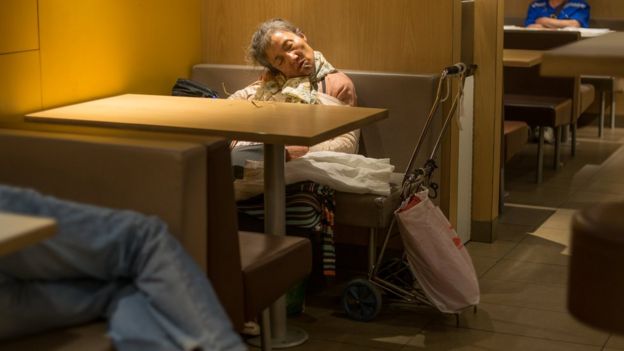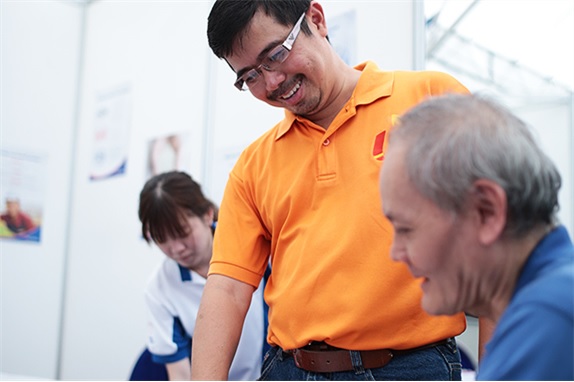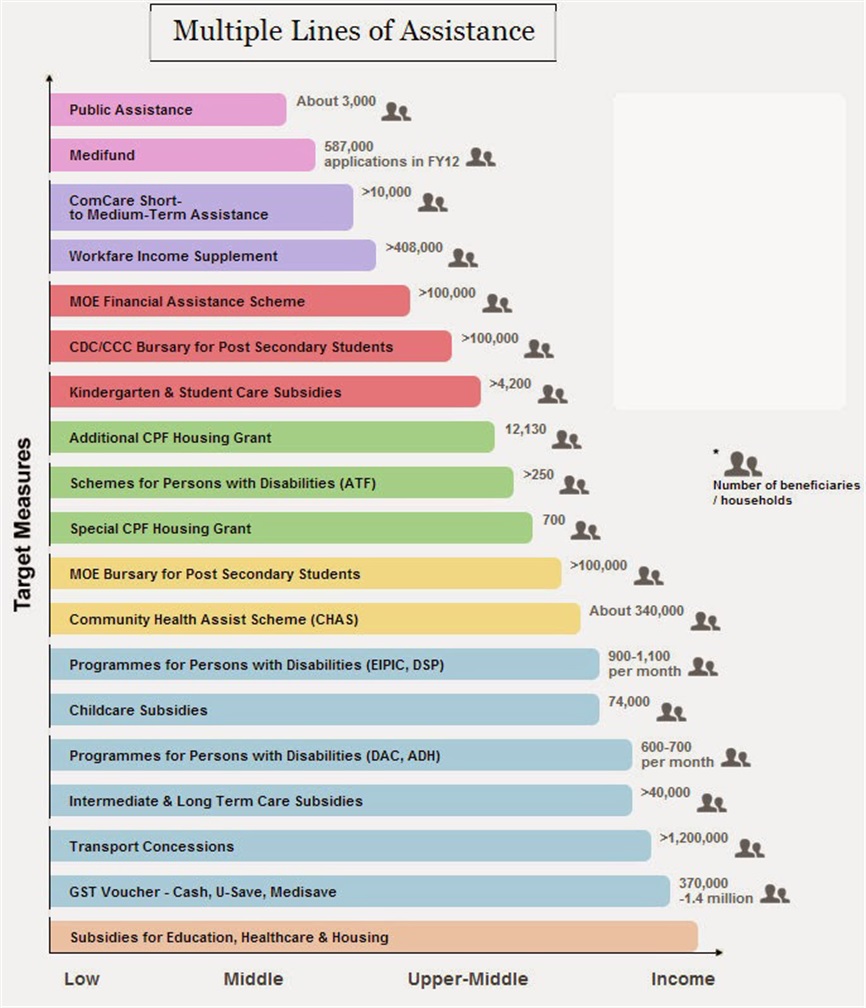I was quite surprised to see this piece of news about a week ago regarding MOE revamping the Social Studies syllabus and including recent hot-button issues like the NIMBY (Not In My Backyard) syndrome and poverty in Singapore. I mentioned the news to some of my students and when some of the more curious ones probed me further on the poverty line, I realised I could not give a very coherent response.
Yes, even when I already have most of the content and information inside that grey matter of mine. Therefore, I have decided to compile a piece to help them and others understand this issue better.
1. Poverty Line? Yes or No? Why and Why Not?
What is a poverty line and what does it do?
This issue caught Singapore’s attention after Hong Kong imposed a poverty line in late 2013 that puts one fifth of its people under the threshold set. A local debate was raised and many social commentators chipped in with their opinions then.
But what exactly is a poverty line and what does it do?
According to Wikipedia: The poverty line, which is also sometimes called the poverty threshold, is the smallest amount of money a person or a family needs to live on; to buy what is needed. People who are below this line are classified as poor. This line is used to decide who can get extra help with things like food, shelter, or medical care.
How can we measure poverty in developed countries like Singapore?
However, Singapore’s government has refrained from establishing an official poverty line in Singapore.
This is because measuring poverty in developed countries can be very tricky. As mentioned in this article, in developing countries, the World Bank defines the absolute poverty line at US$1.25 (S$1.55) a day, and has set it at US$2 a day for middle-class developing countries. However, there is no consensus for developed countries.
Which isn’t too surprising. In fact, Kishore Mahbubani, dean of the Lee Kuan Yew School of Public Policy, mentioned in 2001 that Singapore had already eradicated poverty, since starvation and homelessness had ceased to become major policy concerns. It is indeed difficult to define/ measure poverty in a developed country.
Nonetheless, many developed countries, including Hong Kong have chosen to adopt the relative poverty indicator. In this measure, the line is generally set at a proportion of the median household income, typically at 50% or 60%. It is interesting to note that even though most developed countries have an official poverty line, South Korea and Canada are exceptions along with Singapore.
Why does the Singapore government choose not to have an official poverty line?
Even though Hong Kong has implemented the poverty line in 2013, things have not really improved much over there. Just check out the McRefugees of Hong Kong. It goes to show that the poverty line is simply a tool to indicate poverty and even then, maybe not a very useful one.

McRefugees in Hong Kong. McDonald outlets are their “home”.
Let’s imagine a recession hitting Singapore and median income drops a significant 20%. Fewer households would now be defined as “poor”. Are you confused why? I have explained above that a poverty line is generally set at a proportion of the median household income, typically at 50% or 60%. So if let’s say our median income is $4,000, and our poverty line is set at 50% of median income, so everyone earning $2,000 and below will be considered “poor”. But if a recession hits and median incomes drops to $3,000, the poverty line will drop to $1,500, so the “poor pool” becomes smaller in number. Basically, the lower the median income, the smaller the number of people defined as “poor”.
However, is a drop in median income a positive outcome for Singapore? Or more important, would this actually do more good or harm to the Singaporeans who really need help? When there is a recession, fewer households and individuals will be defined as “poor” and hence, fewer people will be receiving help. Thus, a pat on policy makers’ back?
Prior to joining the NTUC as its Secretary-General, Chan Chun Sing was Minister for Social and Family Development and in that capacity, he had explained, “If we use a single poverty line to assess the family, we also risk a ‘cliff effect’, where those below the poverty line receive all forms of assistance, while other genuinely needy citizens outside the poverty line are excluded”. A broader definition could better reflect the different needs and provide the different help required by the diverse groups of needy.
From a philosophical or even idealistic perspective, establishing a poverty line could potentially direct help to this group. However, from an implementation perspective, not establishing a poverty line does not mean that the needy do not receive the help they need.
2. Who are the poor/needy in Singapore?
The low-skilled and low-waged
There are some research (like this one here) showing that up to 20% of resident households could be earning less than $1,500 a month. The bottom quintile of wage earners tend to be made up of low-skilled workers and their wage growth has not kept up with the country’s economic growth for much of the past decade.
Increased globalization, competition from foreign labour and the practices of cheap-sourcing may have also contributed to depressed wages for these workers.
The old and destitute
These folks tend to be above 70 already and were likely labourers during Singapore’s formative years. They could be working as coolies or Samsui women or even domestic helpers and might not have enjoyed the higher wages after Singapore became more prosperous after the 1980s.
Furthermore, due to physical or even language barriers, they struggle to find a job nowadays and cannot benefit from some of the current measures and polices the government has introduced to help low wage workers.
It is heartening to learn of how the Ministry of Social and Family Development is actively helping Singapore’s poorest, so that no one is left behind. In fact, it even patrols beaches and other public places in search of people who need help.
3. What have the Government, Labour Movement and Society Provided?
The Many Helping Hands (MHH) Approach
The new schemes like The Pioneer Generation Package and MediShield LIFE aims to take care of the healthcare needs for most of the elderly in Singapore. By ensuring lifetime medical insurance coverage and heavily subsiding their healthcare needs, it takes a huge burden off their shoulders. The Silver Support Scheme will also help to supplement the income of the bottom 30 percent of the elderly population who are low-income in their earlier year.
For current low wage workers, Workfare helps to encourage low wage workers to continue working and build up their CPF savings for their retirement, housing and healthcare needs, by supplement their income and retirement savings through cash payments and CPF contributions.
The Labour Movement has also been advocating for the implementation of Progressive Wage Model (PWM) to help our low wage workers and this includes a minimum wage for them. THey have currently succeeded in getting the government to impose licensing requirements so as to implement the PWM for the cleaning, security and landscaping industries.

According to Labour MP Zainal Sapari, the Progressive Wage Model was developed to “make sure that low-wage workers such as cleaners, landscape technicians and security officers are paid fairly, wages that commensurate with their skills, productivity as well as their job responsibility.”
“We are hoping for them to be paid better wages, but at the end of the day, I think this is a good step to make sure that we are fair and allow the cleaners to grow in the job.” – Labour MP and NTUC U Care Centre Director Zainal Sapari
The National Wage Council (NWC) is yet another body that makes wage recommendations for low wage workers. It has recommended a minimum built-in wage increase of $50 in 2012, $60 in 2013 and 2014 for these low wage workers.
And if these workers are unemployed due to unfortunate personal circumstances, they could also turn to ComCare for urgent or short to medium term assistance.
The “Kueh Lapis” Approach
If you at the diagram above, 100 percent of the population benefits from the government spending on education, about 80 percent from various types of housing subsidies and probably 30 percent could benefit from schemes like Workfare.
This Kueh Lapis approach is probably best explained by Minister Chan Chun Sing.
4. Should we be more concerned about social mobility?
Providing opportunities for children from low-income background a good chance of succeeding in society
In a developed country like Singapore, if we were to have a poverty line based on a proportion of median income, it is inevitable for some to fall below the threshold. It’s Mathematics and there will always be 20% of households in the bottom quintile.
Therefore, I would be more concerned about social mobility rather than relative poverty in a developed country like Singapore where absolute poverty has been eradicated. Social mobility is the movement of individuals, families, households, or other categories of people within or between social strata in a society. It is a change in social status relative to others’ social location within a given society.
For children growing up in a low-income family, social mobility is crucial to escape from a poverty cycle. And from personal experience, I am so glad that Singapore has implemented compulsory Primary education and that the best schools in Singapore are public schools instead of private schools.
As a child grow up in a 5 member lower middle income family, my parents did not have the financial resources to send me for additional tuition or supplementary lessons. However, I performed consistently well for most of the national exams as I had access to wonderful teachers who were willing to invest their time in me. I still remember my Sec 4 English teacher who would plough through my many English composition drafts before my O Level examinations.
Even though I was somewhat financially disadvantaged as compared to some of my peers, it did not prevent me from performing well academically, clinching a scholarship during university and earning an above average salary during my first job.
Positive social mobility outcomes in Singapore
Not surprisingly, I am not the only example. In fact, there are many from humble backgrounds that have risen to the top echelons of society.
To illustrate the country’s success in ensuring social mobility, I proudly attach the following excepts from DPM Tharman:
“In the US for example, among those who were in their mid-20s and early 30s, and whose parents were in the bottom 20 percent of incomes, only 7.5 percent eventually moved up into the top 20 percent among their peers, or those of the same age. In contrast, Singapore saw 14 percent of those from parents in the bottom 20 percent, move up to the top 20 percent among their peers. ”
Interestingly, our results also fare better than Scandinavian countries which are well-know for being egalitarian. This is probably the best indicator that shows that the policies undertaken by the government gives the less well-off the best chances of getting out of the poverty trap.
We have a unique political system, with one dominant party for the past 50 years. It goes to show that the most common systems in the world might not be best for us and all systems are likely to have their pros and cons. Therefore, by engaging a myriad of indicators and not depending on just one single poverty line to disburse help, who is to say we are not closer to getting it “more right” than other countries?
